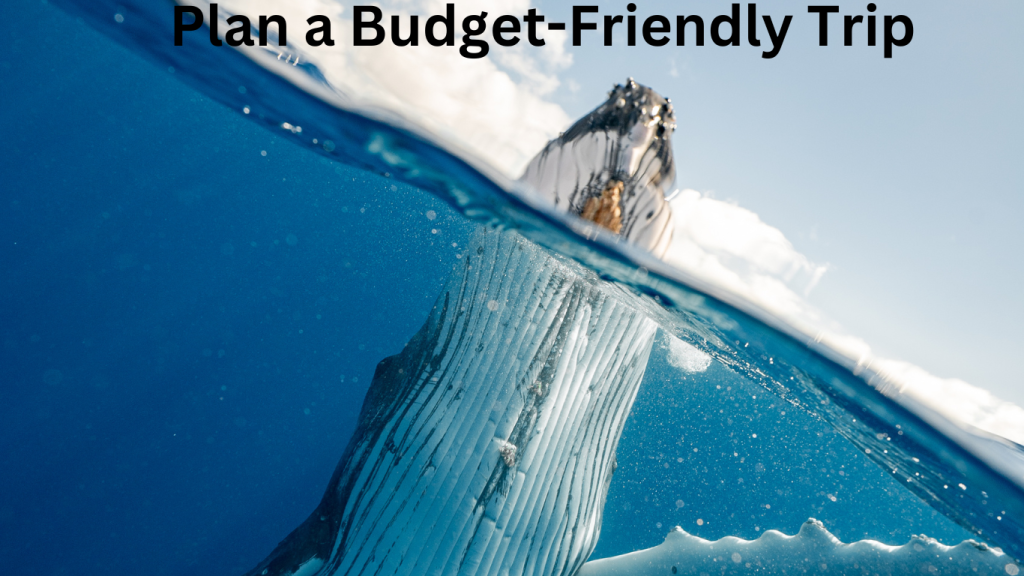
Are you tired of dreaming about your next vacation but feeling held back by the thought of skyrocketing costs? You’re not alone. According to a recent survey, over 60% of travelers cite budget constraints as the biggest obstacle to planning their trips. But here’s the good news: with a little strategy and smart planning, you can enjoy an incredible getaway without breaking the bank.
In this article, we’ll guide you step-by-step on how to plan a budget-friendly trip without compromising on fun or comfort. Whether you’re a seasoned traveler or planning your first adventure, these expert tips will help you stretch your dollars further while creating memories that last a lifetime. Let’s dive in!
Table of Contents
Why Planning a Budget-Friendly Trip Matters
Traveling is one of life’s greatest joys, but let’s face it—costs can quickly add up. From expensive flights to overpriced accommodations and dining, the rising costs of travel can make it seem like exploring the world is only for those with deep pockets. However, with affordable travel tips and careful budget travel planning , you can turn your dream trip into a reality without overspending.
Planning ahead isn’t just about saving money—it’s about creating a stress-free experience that allows you to focus on what truly matters: enjoying your journey. By setting a clear budget and sticking to it, you can avoid last-minute panic and unexpected expenses. Plus, having a financial plan in place means you’ll have more savings left over for unforgettable experiences, like trying local cuisine or embarking on an exciting excursion.
Smart travelers know that preparation is key. With the right smart travel strategies , you can stretch your budget further while still indulging in the activities and destinations you’ve always wanted to explore. Whether you’re traveling solo, with family, or with friends, mastering the art of budget-friendly travel ensures you get the most out of every dollar—and every moment—of your trip.
Step 1: Set a Realistic Budget

The first step in planning a budget-friendly trip is setting a realistic budget. Without a clear financial plan, it’s easy to overspend and end up stressed instead of relaxed. A well-thought-out budget ensures you can enjoy your trip without constantly worrying about money. Here’s how to create a travel budget planner that works for you.
Break Down Your Expenses
Start by estimating how much you’ll need for each category of your trip. Breaking down your expenses helps you allocate funds wisely and avoid surprises. Here are the key categories to consider:
- Accommodation : Research average costs for hotels, hostels, or vacation rentals in your destination. Decide how much you’re willing to spend per night.
- Transportation : Include flights, trains, buses, car rentals, and even local transport like taxis or subway passes.
- Food : Estimate daily meal costs based on your destination. Will you eat at restaurants, street food stalls, or cook your own meals?
- Activities : Factor in entrance fees for attractions, tours, or adventure activities you don’t want to miss.
- Emergencies : Always set aside a small buffer for unexpected expenses, like medical emergencies or lost items.
For example, if your total trip budget is $1,000, you might allocate 30% to accommodation, 25% to transportation, 20% to food, 15% to activities, and 10% for emergencies. Adjust these percentages based on your priorities.
Step 2: Choose Affordable Destinations
Best Budget-Friendly Travel Destinations
One of the most effective ways to plan a budget-friendly trip is by choosing destinations that are known for being affordable. While some places may have high costs for accommodations, food, and activities, others offer incredible experiences without breaking the bank. Here are some cheap travel destinations that are perfect for travelers on a budget:
- Southeast Asia : Countries like Thailand, Vietnam, and Indonesia are famous for their low-cost accommodations, delicious street food, and affordable transportation. You can enjoy stunning beaches, rich cultural heritage, and vibrant cities without spending a fortune.
- Eastern Europe : Cities like Budapest, Krakow, and Bucharest offer beautiful architecture, historical landmarks, and lively nightlife at a fraction of the cost of Western European destinations.
- Central America : Destinations like Nicaragua, Guatemala, and Panama provide adventurous experiences, from exploring lush rainforests to relaxing on pristine beaches—all at budget-friendly prices.
- India : Known for its diverse culture and landscapes, India offers incredible value for money, with affordable hotels, mouthwatering cuisine, and unforgettable experiences like visiting the Taj Mahal or exploring Rajasthan’s palaces.
These destinations prove that you don’t need to spend extravagantly to have an amazing travel experience.
Off-Season Travel Benefits
Another smart strategy for saving money is traveling during the off-season. Many popular destinations become significantly cheaper when visited outside their peak tourist months. Not only will you save on flights and accommodations, but you’ll also avoid crowded attractions and long lines.
For example:
- Visiting Europe in late fall or early spring means fewer tourists and lower prices on hotels and flights.
- Heading to tropical destinations during the rainy season often results in deep discounts, and you might still enjoy plenty of sunny days.
By embracing off-season travel benefits , you can stretch your budget further while enjoying a more relaxed and authentic experience.
Step 3: Find Affordable Accommodation

How to Save on Accommodation for Your Trip
Accommodation is often one of the biggest expenses when traveling, but with a little research and flexibility, you can find cheap places to stay that don’t compromise on comfort or safety. Here are some budget accommodation tips to help you save money while still enjoying a great place to rest your head.
Explore Affordable Accommodation Options
There’s no shortage of budget-friendly lodging options if you know where to look. Consider these alternatives to traditional hotels:
- Hostels : Perfect for solo travelers or those looking to meet new people, hostels offer dormitory-style rooms at a fraction of the cost of private accommodations. Many also offer private rooms for couples or small groups. Websites like Hostelworld make it easy to compare prices and read reviews.
- Airbnb : Renting a room or an entire apartment through Airbnb can be a cost-effective option, especially for longer stays or group travel. You’ll often get more space and amenities (like a kitchen) than you would in a hotel.
- Homestays : Staying with a local family through platforms like Homestay.com or Couchsurfing allows you to immerse yourself in the local culture while saving money. Plus, hosts can provide insider tips on things to do and see.
- Budget Hotels : Chains like Ibis, OYO Rooms, or even locally-owned guesthouses often offer clean, comfortable rooms at affordable rates. Look for deals on platforms like Booking.com or Agoda .
Tips for Finding Discounts on Accommodation
To maximize savings, here are some strategies for scoring great deals on your stay:
- Book in Advance or Last Minute : Booking early can secure lower rates, but last-minute deals can also be a goldmine, especially for hostels or hotels trying to fill empty rooms.
- Use Price Comparison Tools : Websites like Booking.com , Trivago , and HotelsCombined allow you to compare prices across multiple platforms to find the best deal.
- Sign Up for Loyalty Programs : Many hotel chains and booking platforms offer loyalty programs that reward you with discounts, free nights, or perks like free breakfast.
- Look for Promo Codes : Before finalizing your booking, search for promo codes or cashback offers on sites like RetailMeNot or Honey.
Step 4: Save on Transportation
Smart Ways to Cut Down on Travel Costs
Transportation can be one of the most significant expenses when traveling, but with a little planning and smart strategies, you can drastically reduce these costs. Whether you’re flying to your destination, getting around the city, or exploring nearby areas, there are plenty of ways to save money on transportation. Here’s how to make your travel more affordable with cheap flights , affordable transportation , and other cost-saving tips.
Affordable Ways to Travel
- Public Transport :
Public transportation is often the cheapest way to get around in most cities. Buses, trains, subways, and trams are not only budget-friendly but also give you a chance to experience the local culture. Many cities offer day passes or travel cards that allow unlimited rides for a fixed price, making it even more cost-effective. - Ridesharing Apps :
If public transport isn’t available or convenient, ridesharing apps like Uber , Lyft , or local alternatives (e.g., Grab in Southeast Asia) can be a great option. These services often have shared ride options that are cheaper than private taxis. Additionally, some apps offer discounts for first-time users or during off-peak hours. - Budget Airlines :
For long-distance travel, budget airlines like Ryanair , EasyJet , or AirAsia can save you a significant amount of money. However, be mindful of additional fees for baggage, seat selection, and onboard meals. Always compare prices and read the fine print before booking. - Walking or Biking :
In smaller cities or towns, walking or renting a bike can be a fun and free way to explore. Many destinations offer bike-sharing programs, which are both eco-friendly and affordable.
Step 5: Eat Like a Local

How to Enjoy Delicious Food Without Breaking the Bank
One of the best ways to immerse yourself in a new culture is through its food. However, dining out at touristy restaurants or overpriced cafes can quickly eat into your travel budget (pun intended!). The key to eating affordably while traveling is to eat like a local. By avoiding tourist traps and exploring local markets, street food stalls, and self-catering options, you can enjoy delicious meals without breaking the bank. Here are some budget dining tips to help you savor the flavors of your destination without overspending.
Avoid Tourist Traps and Eat Where the Locals Go
Tourist-heavy areas often come with inflated prices and mediocre food. Instead, venture a few blocks away from major attractions and look for places where locals gather. These spots typically offer authentic dishes at much lower prices.
- Street Food Stalls : Street food is not only affordable but also a great way to sample local specialties. From tacos in Mexico to pad thai in Thailand, street vendors often serve up some of the most flavorful and budget-friendly meals.
- Local Markets : Visit local markets or food halls where you can find fresh produce, ready-to-eat meals, and regional delicacies. These markets are often bustling with locals and provide an authentic taste of the area.
- Family-Owned Restaurants : Small, family-run eateries are usually cheaper than chain restaurants and offer home-cooked meals that reflect the local cuisine. Look for places filled with locals rather than tourists.
Grocery Shopping and Self-Catering Tips
If you’re staying in accommodations with a kitchen, grocery shopping and cooking your own meals can be a game-changer for your budget. Not only does this save money, but it also gives you the flexibility to try local ingredients and experiment with regional recipes.
- Shop at Local Supermarkets : Visit local grocery stores or farmers’ markets to stock up on fresh produce, bread, snacks, and drinks. This is often much cheaper than eating out for every meal. Plus, you’ll get a glimpse into the local lifestyle.
- Cook Simple Meals : You don’t need to prepare elaborate dishes—simple meals like sandwiches, pasta, or salads can be quick, easy, and cost-effective.
- Pack Picnics : If you’re planning a day of sightseeing, pack a picnic with items from the grocery store. This is a great way to save money while enjoying a meal in a scenic spot like a park or beach.
Additional Budget Dining Tips
- Look for Lunch Specials : Many restaurants offer lunch specials or set menus that are more affordable than dinner options. Take advantage of these deals to enjoy a hearty meal at a lower price.
- Skip Bottled Water : In many countries, tap water is safe to drink, so avoid buying expensive bottled water. If you’re unsure about the water quality, consider using a reusable water filter bottle.
- Ask Locals for Recommendations : Don’t hesitate to ask locals or your accommodation hosts for their favorite cheap eats. They’ll often point you toward hidden gems that aren’t listed in guidebooks.
Step 6: Plan Free or Low-Cost Activities
Free or Low-Cost Activities to Explore
- Free Walking Tours :
Many cities around the world offer free walking tours led by knowledgeable local guides. These tours typically cover the city’s main attractions, hidden gems, and historical landmarks. While the tour itself is free, it’s customary to tip the guide based on your satisfaction. Websites like Free Walking Tours or Sandemans New Europe can help you find these tours in popular destinations. - Hiking and Nature Walks :
If you’re a fan of the outdoors, hiking is one of the best ways to enjoy nature for free. Whether it’s exploring national parks, scenic trails, or coastal paths, many destinations offer breathtaking views without any entrance fees. For example, hikes in places like Yosemite National Park (USA) or Plitvice Lakes National Park (Croatia) provide stunning landscapes at little to no cost. - Visit Parks and Public Spaces :
Public parks, gardens, and beaches are often free to enter and provide a relaxing way to unwind. Whether it’s Central Park in New York, Hyde Park in London, or the beaches of Bali, these spaces are perfect for picnics, leisurely strolls, or simply soaking up the atmosphere. - Explore Cultural Landmarks :
Many cities have iconic landmarks, churches, or historical sites that are either free or have minimal entry fees. For instance, visiting the Eiffel Tower’s Trocadéro Gardens in Paris offers stunning views without the cost of going up the tower itself. Similarly, many cathedrals and temples around the world are free to enter, allowing you to admire their architecture and history.
Step 7: Pack Smart and Avoid Hidden Costs
Packing Essentials to Save Money
- Travel Adapters :
If you’re traveling internationally, don’t forget to pack a universal travel adapter. Many hotels or airports charge exorbitant fees for renting adapters, and not having one could leave you unable to charge your devices. A small investment in a quality adapter before your trip can save you money and hassle. - Reusable Water Bottle :
Buying bottled water every day can add up, especially in destinations where tap water is safe to drink. Bring a reusable water bottle (preferably with a built-in filter if you’re unsure about the water quality) to stay hydrated without spending unnecessarily. - Snacks and Essentials :
Packing a few snacks, such as granola bars or trail mix, can help you avoid overpriced airport or convenience store food during layovers or long travel days. Additionally, carrying essentials like pain relievers, sunscreen, or basic first-aid items ensures you won’t have to pay inflated prices at tourist shops. - Lightweight Luggage :
Overpacking can lead to excess baggage fees, which are a common hidden travel cost . Stick to a carry-on whenever possible, and pack versatile clothing that can be mixed and matched. This not only saves money but also makes your travels more convenient.
Step 8: Use Travel Rewards and Discounts

Leverage Credit Card Points and Frequent Flyer Miles
- Credit Card Rewards :
Many credit cards offer generous sign-up bonuses and rewards for everyday spending. These points can be redeemed for flights, hotel stays, or even cash back. For example, cards like Chase Sapphire Preferred or American Express Gold often provide bonus points that can cover a significant portion of your travel costs. Always pay off your balance in full to avoid interest charges and maximize your savings. - Frequent Flyer Miles :
If you travel often, signing up for airline loyalty programs can help you accumulate miles that can be redeemed for free flights or upgrades. Even occasional travelers can benefit by using co-branded credit cards that earn miles with specific airlines. For instance, flying with Delta SkyMiles or United MileagePlus partners can help you rack up miles faster. - Transfer Points Strategically :
Some credit cards allow you to transfer points to airline or hotel partners at a favorable rate. For example, transferring Chase Ultimate Rewards points to Hyatt or United Airlines can unlock better value than redeeming them directly. Always check for promotions or bonuses when transferring points to maximize their worth.
Take Advantage of Student, Senior, and Military Discounts
- Student Discounts :
If you’re a student, many airlines, train services, and attractions offer discounted rates. Websites like STA Travel specialize in student travel deals, providing affordable options for flights, hostels, and tours. Always carry your student ID to take advantage of these offers. - Senior Discounts :
Travelers over a certain age (usually 60+) can often access senior discounts on transportation, accommodations, and activities. For example, Amtrak offers discounted fares for seniors, and many hotels provide special rates for older guests. - Military Discounts :
Active-duty military personnel, veterans, and their families can access exclusive discounts on flights, hotels, and car rentals. Airlines like Southwest and Delta, as well as hotel chains like Marriott and Hilton, frequently offer military-specific promotions.
Join Loyalty Programs for Airlines, Hotels, and Car Rentals
- Airline Loyalty Programs :
Signing up for airline loyalty programs is free and can lead to significant savings over time. Members often receive priority boarding, free checked bags, and access to exclusive sales. Plus, accumulating status can unlock elite benefits like free upgrades and lounge access. - Hotel Loyalty Programs :
Hotel chains like Marriott Bonvoy , Hilton Honors , and IHG Rewards Club offer points for every stay, which can be redeemed for free nights or room upgrades. Some programs also allow you to earn points through dining or shopping partnerships, making it easier to accumulate rewards faster. - Car Rental Loyalty Programs :
Joining car rental loyalty programs like Hertz Gold Plus Rewards or Avis Preferred can save you time and money. Members often enjoy perks like skip-the-counter service, discounted rates, and free additional drivers. Plus, renting frequently can help you earn free rental days.
Common Mistakes to Avoid When Planning a Budget-Friendly Trip

1. Overpacking
Mistake : Overpacking not only makes your trip less convenient but can also lead to unexpected costs, such as baggage fees on budget airlines or extra transportation expenses.
Solution : Stick to a carry-on whenever possible and pack versatile clothing that can be mixed and matched. Use packing cubes to stay organized and avoid the temptation to bring too many items. Always check your airline’s baggage policy to avoid surprises at the airport.
2. Booking Too Late or Too Early
Mistake : Booking flights or accommodations too late can result in higher prices due to limited availability, while booking too early might mean missing out on last-minute deals or price drops.
Solution : Aim to book flights 1-3 months in advance for domestic trips and 2-6 months for international travel. For accommodations, booking 1-2 months ahead is usually ideal. However, keep an eye on price comparison tools like Google Flights or Hopper to spot trends and know when to lock in your booking.
3. Not Researching Costs Beforehand
Mistake : Failing to research the average costs of food, transportation, and activities in your destination can lead to overspending or running out of money mid-trip.
Solution : Before your trip, create a detailed budget by researching the typical costs of meals, public transport, attractions, and accommodations. Use resources like Numbeo or Expatistan to compare living costs across cities. This will help you set realistic expectations and allocate funds wisely.
4. Ignoring Travel Insurance
Mistake : Skipping travel insurance may seem like a way to save money, but it can leave you vulnerable to unexpected medical emergencies, trip cancellations, or lost belongings.
Solution : Invest in a comprehensive travel insurance plan that covers medical emergencies, trip interruptions, and theft. Compare providers like World Nomads , Allianz , or SafetyWing to find a plan that fits your needs and budget. It’s a small expense that can save you from major financial setbacks.
5. Falling for Tourist Traps
Mistake : Dining, shopping, or booking tours in tourist-heavy areas often comes with inflated prices and lower quality.
Solution : Venture away from major attractions to find local markets, family-owned restaurants, and hidden gems. Use apps like Yelp or TripAdvisor to read reviews and discover authentic experiences. Ask locals for recommendations to uncover the best spots that aren’t overrun by tourists.
6. Not Using Price Comparison Tools
Mistake : Booking flights, hotels, or car rentals without comparing prices across platforms can lead to overpaying.
Solution : Always use price comparison tools like Skyscanner , Booking.com , or Kayak to find the best deals. Set up price alerts to monitor fluctuations and book when prices drop. Additionally, clear your browser cookies or use incognito mode to avoid dynamic pricing tactics.
7. Forgetting About Hidden Fees
Mistake : Hidden fees, such as resort fees, baggage charges, or foreign transaction fees, can add up quickly and derail your budget.
Solution : Read the fine print before booking accommodations or flights to understand all associated costs. Use a credit card with no foreign transaction fees when traveling internationally, and always ask about additional charges upfront to avoid surprises.
8. Overlooking Free or Low-Cost Activities
Mistake : Spending money on expensive attractions or tours when there are plenty of free or low-cost alternatives available.
Solution : Take advantage of free walking tours, hiking trails, parks, and cultural landmarks. Many cities offer free museum days or discounted passes for multiple attractions. Prioritize experiences that align with your interests without breaking the bank.
9. Not Setting Aside an Emergency Fund
Mistake : Failing to allocate funds for emergencies can leave you unprepared for unexpected expenses, such as medical issues or travel disruptions.
Solution : Include an emergency buffer in your travel budget (around 10-15% of your total budget) to cover unforeseen costs. This ensures you’re prepared for any hiccups without derailing your entire trip.
10. Skipping Travel Rewards Programs
Mistake : Not signing up for loyalty programs or using credit card rewards means missing out on valuable savings and perks.
Solution : Join airline, hotel, and car rental loyalty programs to earn points for future discounts or free stays. Use a travel rewards credit card for everyday purchases to accumulate points that can be redeemed for flights, accommodations, or upgrades.
Conclusion
Planning a trip doesn’t have to mean breaking the bank. By following the steps outlined in this article, you can master how to plan a budget-friendly trip without sacrificing fun or comfort. From setting a realistic budget and choosing affordable destinations to leveraging travel rewards and avoiding common mistakes, these strategies will help you stretch your dollars further while creating unforgettable memories.
We’ve covered everything from finding cheap flights and accommodations to enjoying free activities and packing smart to avoid hidden costs. Each tip is designed to empower you to take control of your travel expenses and make the most of your adventure.
Now that you’re equipped with expert advice on how to plan a budget-friendly trip , it’s time to put these tips into action. Ready to plan your next adventure? Follow these steps to enjoy a memorable and budget-friendly trip!
25 Best Travel Tips for Beginners
What is the best way to save money on flights?
Timing is everything! Use tools like Google Flights or Skyscanner to track price trends and book when fares dip. Flying mid-week or during off-peak seasons can also score you major savings—think of it as catching a flight on a “happy hour” deal!
How can I find cheap places to stay while traveling?
Think beyond hotels! Platforms like Airbnb , Hostelworld , and even local homestays offer affordable options. Pro tip: Look for accommodations with kitchens so you can cook your own meals—your wallet (and stomach) will thank you.
What are some free activities to do while traveling?
The world is full of free fun if you know where to look! Explore parks, hike scenic trails, join free walking tours, or visit cultural landmarks that don’t charge entry fees. Sometimes the best memories come from simply wandering and soaking up the local vibe.
How do I avoid hidden travel costs?
Stay one step ahead by reading the fine print! Research baggage fees, resort charges, and currency exchange rates before you go. Pack smart (hello, reusable water bottle!) and always set aside a small emergency fund—because surprises happen, but they don’t have to break the bank.
Should I use travel rewards programs for budget travel?
Absolutely! Travel rewards are like free money waiting to be claimed. Sign up for airline and hotel loyalty programs, use a travel rewards credit card, and watch those points pile up. It’s like getting paid to travel—why wouldn’t you?
